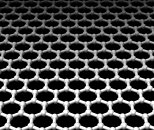- Joined
- Oct 9, 2007
- Messages
- 47,848 (7.39/day)
- Location
- Dublin, Ireland
| System Name | RBMK-1000 |
|---|---|
| Processor | AMD Ryzen 7 5700G |
| Motherboard | Gigabyte B550 AORUS Elite V2 |
| Cooling | DeepCool Gammax L240 V2 |
| Memory | 2x 16GB DDR4-3200 |
| Video Card(s) | Galax RTX 4070 Ti EX |
| Storage | Samsung 990 1TB |
| Display(s) | BenQ 1440p 60 Hz 27-inch |
| Case | Corsair Carbide 100R |
| Audio Device(s) | ASUS SupremeFX S1220A |
| Power Supply | Cooler Master MWE Gold 650W |
| Mouse | ASUS ROG Strix Impact |
| Keyboard | Gamdias Hermes E2 |
| Software | Windows 11 Pro |
Sweden's Chalmers University researchers demonstrated a graphene-based transistor design that allows more compact RF mixer processing. This could very well be a breakthrough, because it not only allows designing much more compact radio-frequency electronics, but also allows circuits to run faster. This could accelerate the development of Terahertz electronics systems whose applications include radar, radio astronomy, and process monitoring. Its developers have named it G-FET, or Graphene field-effect transistor. An allotrope of carbon, graphene is an honeycomb lattice of carbon atoms on an atomic-scale. It is electrically-symmetrical, giving it the ability to act as electron or hole carrier. This means that a single G-FET can act as an RF mixer without needing the feeding circuits used in current designs.

View at TechPowerUp Main Site

View at TechPowerUp Main Site





